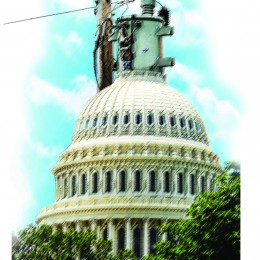 On the way home from work recently, I heard a news report about scientists from Japan, the United States and Russia working on a mammoth experiment. Literally.
On the way home from work recently, I heard a news report about scientists from Japan, the United States and Russia working on a mammoth experiment. Literally.
Within six years, these scientists plan to take DNA from the carcass of a 10,000-year-old baby woolly mammoth found frozen in Siberian permafrost, slip it into the egg cells of an African elephant and implant the embryo in an elephant. They hope the impregnated pachyderm delivers them the first baby mammoth born since the last ice age.
The science fiction blockbuster “Jurassic Park” immediately came to mind. Scientists in the movie resurrected dinosaurs from dino DNA — with horrific results when the scheme, as they so often do, went askew. Actor Jeff Goldblum, in the role of sarcastic but scrupulous Dr. Ian Malcolm, delivers one of the greatest movie lines of all time. Asked his opinion of the amazing cloning technique, he tells the park’s developer: “Your scientists were so preoccupied with whether or not they could, they didn’t stop to think if they should.”
Flipped around, the line becomes a defense in the debate against renewable energy portfolio mandates some lawmakers, both in Washington and at our Statehouse, talk about imposing on electric utilities. Some mandates call for up to 20 percent of electricity to be generated by wind by 2030. The flipped line goes: “We’re all so preoccupied with whether 20 percent of our electricity should come from wind, no one is stopping to think if it could.”
It’s time to face facts. Wind produces less than 2 percent of the nation’s energy. Yet, we’re expected to see that balloon up to 20 percent in less than 20 years? That’s like expecting a full-sized mammoth to emerge from a DNA-spiked embryo implanted in a mouse.
A couple of years ago, Tony Ahern, CEO of the Ohio electric cooperatives’ association,
analyzed the 20 percent mandates being pushed in his state. To meet that mandate, he figured 5,200 2-megawatt wind turbines would have to be erected along Lake Erie. Ohio’s shoreline could accommodate 30 rows of towering turbines running north-south and 175 columns running east-west. “But if we went that route,” he wrote, “there wouldn’t be room left for shipping lanes, fishing boats or anything else.”
Ahern’s conclusion: “I tell people that when they hear someone make claims, don’t be afraid to ask questions. Sometimes expectations exceed realities.”
The answer for Indiana to cut fossil fuel use isn’t a mandate blowin’ in the wind. The answer, as Gov. Mitch Daniels has said, is consideration of “all of the above.” We need to do renewables and clean coal and whatever else makes sense. And a heavy dose of tried-and-true energy efficiency measures is a must.
We need to use our energy smarter. We need to do what our moms taught us: turn out the light when no one’s using it. We need to build our homes better so they don’t leak air like old barns. Design, insulation, heating, cooling and ventilation equipment, appliances — all should work together as a tight, single unit. Indiana’s electric cooperatives have the blueprints and are helping consumers and homebuilders build these homes all around the state. It’s the “Indiana Touchstone Energy Home Program.”
These are just starting points.
Every month, as letter writer Harold Wilson of Corydon noted, Electric Consumer runs articles on ways to save energy. But we all need to do more.
Someday, scientists may take a page from other sci-fi flicks and give us the Holy Grail of energy — a source, like nuclear fusion, that will produce all the affordable energy we’d ever need without harming the environment.
Until then, we need to keep all options open and not expect mandates — cloned from other states — to realistically meet Indiana’s needs. If science is able to reincarnate an ice-age mammoth, anything’s possible with energy, I guess. But mandates of 20 percent wind generation within 20 years are more hot air than viable plans to provide the affordable electricity we need and reduce carbon dioxide emissions.



